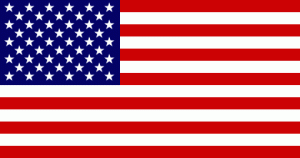
United States
Quick reference
General issues: Federal republic 1847-Present
Country name on general issues: United States, US
Special issues:
- Postmaster provisionals 1845-1847: Alexandria VA. 1846, Baltimore MD. 1846, Boscawen N.H. 1846, Brattleboro VT. 1846, Lockport N.Y. 1846, Millbury Mass. 1846, New York N.Y. 1845, Providence R.I. 1846, St. Louis MO. 1845-1847
- Carrier issues 1842-1863
- Local issues 1842-1863: Baltimore MD. 1850-1857, Boston Mass. 1849-1850, Charleston S.C. 1849-1860, Cincinnati Ohio 1854, Cleveland Ohio 1854, Louisville KY. 1857-1858, New York N.Y. 1842-1850, Philadelphia PA. 1849-1852, St. Louis MO. 1849-1857
- General issues 1851-1863
- Confederate States 1861-1865:
- 3c Postmaster provisionals 1861: Hillsboro N.C., Jackson Miss., Madison Court House FLA., Nashville Tenn., Selma ALA., Tuscumbia ALA.
- Postmaster provisionals 1861-1865: 136 in total, please refer to the list of Stamp Issuing Entities
- General issues 1861-1865
- State issues: Kansas 1929, Nebraska 1929
- Offices abroad: China 1919-1920
- Occupation issues:
- Cuba 1898-1902
- Local issues: Puerto Principe 1898-1899
- Guam 1898-1901
- Philippines 1898-1901
- Puerto Rico 1898-1900
- Local issues: Coamo 1898, Ponce 1898
- Cuba 1898-1902
Currency: 1 Dollar = 100 Cents 1847-Present
Population: 76 212 000 in 1900, 318 900 000 in 2014
Political history United States
Colonization and independence
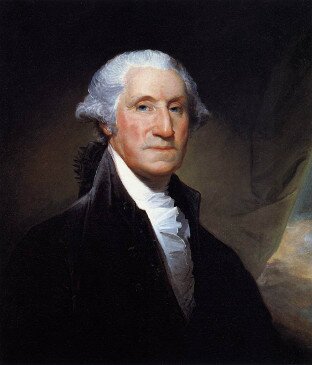
George Washington – General during the War of Independence and first president of the United States
The United States is located in North America. Prior to colonization, the United States was inhabited by a range of Amerindian peoples[1]Commonly called Native Americans in the United States. . These were part nomadic hunter-gatherers and part sedentary peoples that had developed an agricultural tradition. The first Europeans to explore the future United States were the Spanish, who explored the east coast in 1524. The Spanish were also the first to establish a permanent settlement in Florida in 1565. In the 16th century more permanent settlements followed. The Spanish extended their presence in the southwest from the Viceroyalty of New Spain – the current Mexico. The French settled in what is now Louisiana and developed trade routes for the fur trade with the Native Americans. These trade routes extended north to the French settlements in Quebec in modern day Canada and were protected by forts. The Dutch and the Swedish established settlements on the east coast.
The British first settled in the United States in Virginia in 1607. The British settlements expanded in the next century and a half, absorbing the Dutch and Swedish settlements. With the establishment of Georgia, in 1732, the British had formed thirteen colonies on the American east coast – colonies that attracted large numbers of immigrants from Great Britain. Disputes about governance of the colonies and increased taxation – summarized in the adagio ‘no taxation without representation’ – led to protests that eventually escalated into war in 1775 – the American War of Independence[2]Also known as the American Revolution. . In 1776, the thirteen colonies proclaimed independence as the federal republic of the United States of America. The war would be concluded with the treaty of Paris in 1783, in which Great Britain recognized American independence. In 1789, the United States constitution was adopted and George Washington was elected as the first president.
Developments in domestic politics in the 19th and 20th centuries
Having gained independence, the United States would rapidly expand through the acquisition of new territories – for a more detailed discussion of this expansion please refer to the separate section below. The lands acquired were first divided into territories administered by the federal government. Once these territories were sufficiently developed, they achieved statehood and were admitted to the Union. In the 19th century the process met with opposition from the indigenous Native Americans, who were forcibly relocated. The period of the ‘Indian Wars’ ended with the battle of Wounded Knee in 1890. The last territories within the continental United States to achieve statehood were Arizona and New Mexico in 1912. Alaska and Hawaii achieved statehood as the 49th and 50th states in 1959.
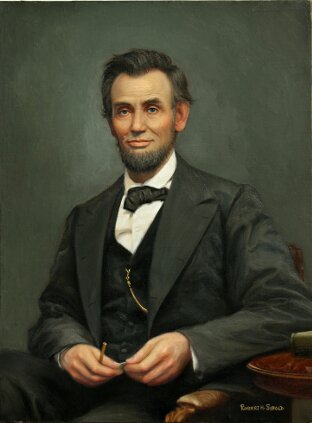
Abraham Lincoln – President during the Civil War
From independence, slavery was an issue of growing importance. The use of slaves was a longstanding practice on the plantations in the south that had been developed since colonial times. Although, in 1808, the import of new slaves had been forbidden, the number of slaves grew from 0.5 million in 1783 to 4.0 million in 1860. From the early 19th century abolitionism gained ground because politicians realized that slavery conflicted with the civil rights as laid out in the Constitution. Later, with growing industrialization, particularly in the northern states, the economy became less dependent on slavery. Tensions escalated in 1860 when the Republican Abraham Lincoln was elected president – the Republicans being, in majority, abolitionist. In 1861, eleven southern states seceded from the Union and formed the Confederate States of America. What followed was the American Civil War. The war would last until 1865 and end in victory for the Union. The southern states would, in subsequent years, be readmitted to the Union. Slavery was abolished and the former slaves were granted civil rights in acts passed in 1866 and 1868.
Having regained stability, the United States saw strong economic growth in the late 19th century through ongoing industrialization. A renewed surge of immigration – now from eastern and southern Europe – brought 18 million immigrants to the United States between 1880 and 1910. Economic growth came to a halt when, in 1929, the Wall Street Crash – the U.S. Stock Market crash of October 29 – triggered the Great Depression. The economic power of the United States had become such that the effects of the crash affected economies worldwide. The depression was overcome by Franklin Delano Roosevelt’s New Deal – a program of increased government control over the economy, government investments and social security measures.
After WWII, the Cold War, in the 1950’s, led to McCarthyism – an anti communist wave during which leftist sympathies were widely and publicly made suspect. In the 1960’s, the civil rights movement manifested itself with Martin Luther King as a prominent leader. Afro Americans had been given civil rights in the 19th century, but were nonetheless discriminated through segregation rules. The 1964 Civil Rights Act ended segregation and the 1968 Civil Rights Act forbade discrimination – thus legally equal, the Afro American population until today faces discrimination. From the 1970’s, presidents either from the Democratic or the Republican party – the parties that have dominated United States politics since the mid 19th centuries – have sailed a more liberal course when Democrat and a more conservative course when Republican.
The United States in international politics
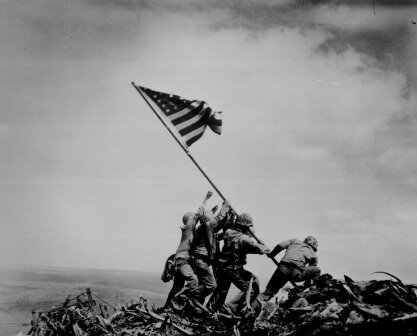
1945 – US Marines raising the flag on Iwo Jima. One of the most iconic pictures of WWII.
In the 19th century, the United States was engaged in three military conflicts. In 1812, war was declared on Great Britain, one of the issues being the hegemony over the British colonies in what is now Canada. The war ended in the status quo ante bellum in 1814. In 1846, the dispute over the Texas border escalated into the Mexican-American War. The war was won in 1848 by the United States. Mexico ceded large parts of its territory to the United States – the Mexican cession. In 1898, the United States intervened in the Cuban war of independence – an intervention that started the Spanish-American War. The war was fought both in the Caribbean and the Pacific and ended with Spain ceding its possessions in the Caribbean and the Pacific. Puerto Rio and Guam are, until today, part of the United States. Cuba became a republic in 1902 and was, until 1934, a de facto United States protectorate. The Philippines was under United States administration, until 1935 as a United States territory, then as a United States commonwealth. The Philippines gained independence in 1946.
In the late 19th and early 20th centuries, the United States became increasingly involved – often militarily – in the domestic politics of the countries in the Caribbean and in Central and South America. In 1903, the Panama Canal Zone was ceded to the United States. The Canal Zone was a United States territory until 1979. United States involvement in its ‘backyard’ continues until today. The last military intervention was on Haiti in 2004.
In WWI the United States was formally neutral. However, the United States did supply the Allies. In 1917, Germany opened an all out submarine offensive to break the naval supply lines and thus brought the United States into the war. The United States forces, deployed on the Western Front in France, shifted the balance of power in favor of the Allies, that gained victory in 1918. After the war, the League of Nations was formed. Although the United States president, Woodrow Wilson, had been a leader in the establishment of the League of Nations, in Congress isolationism had the upper hand and the United States never joined the League.
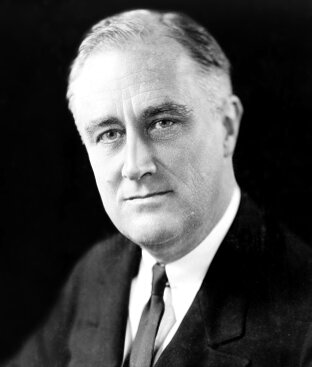
Franklin Delano Roosevelt – President during WWII and originator of The New Deal
In WWII the United States initially, once again, assumed a position of neutrality. The Japanese attack on Pearl Harbor brought the United States into the war in 1941. Soon after Germany and Italy declared war on the United States. The vast industrial potential of the United States proved to be one of the decisive factors in the war. During WWII, the United States was the first to develop and deploy nuclear arms – on Hiroshima and Nagasaki in Japan. Following the Allied victory in 1945, the United States was part of the Allied occupation forces in both Asia and Europe. The occupation of the Japanese Ryukyu Islands lasted until 1972. The Marshall Plan funded European economic recovery.
The United States was leading in the formation of the United Nations in 1945 – that the United States now joined. The United Nations awarded the trust territory of the Pacific Islands – islands that had been administered by Japan before WWII – to the United States in 1947. In the 1980’s and 1990’s the independent republics of the Marshall Islands, Micronesia and Palau would emerge from the trust territory, all in association with the United States. The Northern Mariana Islands is a United States territory until today.
After WWII, the United States and the Soviet Union emerged as the two world superpowers. The Cold War ensued which led to a nuclear arms race. The Cuban crisis, in 1962, may have been the most tense moment, when Soviet installation of a nuclear base on Cuba was barely prevented. The arms race was curtailed through the SALT[3]Strategic Arms Limitation Talks agreements in 1968-1969. Although the United States and the Soviet Union never engaged in a direct confrontation, a number of proxy wars was fought. The first major conflict was the Korean War from 1950 to 1953. The war ended in a division of Korea that is upheld until today. The second major conflict was the Vietnam War. The United States was involved from 1964 until 1973. The war ended in the establishment of a unified Vietnam – under communist rule. Aside from these conflicts with major direct United States involvement, the Cold War was fought, with more indirect involvement, in a number of conflicts on the African continent. Across the world the United States supported anti communist regimes – including dictatorships. In the 1970’s, both the United States and the Soviet Union pursued a policy of detente, relaxing relations.
After the dissolution of the Soviet Union in 1991, the United States became the sole superpower in the world. The focus of international politics shifted from the fight against communism to the islamic world. The islamic revolution in Iran, in the 1970’s, led to ongoing conflicts with the United States. Recently, the first steps have been taken to normalize relations. In 1991 – after Iraq had occupied Kuwait – the United States lead an international coalition in the Gulf War to liberate Kuwait. The attacks on the World Trade Center – attributed to al-Queda – on September 11, 2001, started the War on Terror. The War on Terror resulted in a range of military operations in the Middle East, northern Africa and western and southern Asia. The main theaters of the war were Afghanistan and Iraq – both countries seen as major supporters of al-Queda. Afghanistan was invaded in 2001 and the extremist islamic Taliban regime was toppled. United States forces were withdrawn in 2010. The Saddam Hussein regime was toppled when Iraq was invaded in 2003. The United Sates forces withdrew from Iraq in 2011. The effects of the War on Terror are disputed. Maybe it is too early to pass judgement.
Aside from the above involvement in international politics, the United States has intervened in a range of minor events worldwide.
Economic developments and demography

The Empire State Building in New York – since 1931 a symbol of the economic prowess of the United States
In the early 19th century the United States had an agricultural economy. In the course of the 19th century, the United States rapidly industrialized to become the largest economy in the world. Currently, the United States is characterized as a post industrial economy in which services account for 77.6% of the GDP, industry for 20.8% and agriculture for 1.6%. In terms of GDP, the United States today is the largest economy in the world, although it is approached – and in due time is expected to be surpassed – by China. On the Human Development Index from the United Nations, the United States is qualified as a very high development country, ranking 8th in the world.
The majority of the population – 80% – is white. Afro Americans account for 13% of the population. The indigenous Native Americans account for 0.9% of the population. The United States has traditionally been a country of immigration. In colonial times the immigrants were English, Irish, and Scottish. In the 19th and 20th centuries, the immigrants were predominantly eastern and southern European. The past decades have shown a large number of immigrants from Central and South America – commonly called Hispanics. Hispanics currently account for 15% of the population.
Political history: United States expansion in more detail
Upon gaining independence, the territory of the United States consisted of the former British territory: the thirteen colonies and ‘unorganized’ territories to the west of the colonies. The territory of the United States, at the time, was bordered by the British and French Canadian colonies to the north, the French colony of Louisiana to the west and the Spanish colony of Florida in the south. In the 19th century the United States would greatly expand its territory.
- The first acquisition was the French colony of Louisiana in 1803, the Louisiana Purchase. The French colony of Louisiana stretched from the current state of Louisiana in the south to the border of modern day Canada in the north. France, at the time, focused on expansion in Europe and required funds to finance its ambitions in the European arena.
- In 1819, the United States signed a treaty with Spain, in which the United States gained Spanish Florida and Spain relinquished its claims to the Oregon Territory on the west coast. In exchange, the United States relinquished its claims, based on the Louisiana Purchase, to parts of Spanish New Mexico and Texas.
- In 1819, the border with the British possessions in Canada was straightened in an exchange of territories.
- After Mexico had gained independence from Spain in 1821, part of Mexico proclaimed independence as the republic of Texas in 1836. The republic of Texas voted for incorporation in the United States in 1845.
- In 1846, the United States gained full sovereignty over the southern part of Oregon Territory that, since 1818, had been administered jointly by Great Britain and the United States.
- Texas had, since independence, claimed a large part of Mexican New Mexico. In 1846 the claim triggered the Mexican-American War. The United States came out victorious and in 1848 Mexico ceded not only New Mexico but also Upper California – the Mexican Cession.
- In 1853, the United States purchased more territory from Mexico – the Gadsden Purchase, named after James Gadsden, the United States ambassador to Mexico, who negotiated the purchase.
- In 1867, the United States purchased Alaska from Russia. Alaska was of little importance to Russia and the purchase was seen as an opportune way to strengthen the state finances. In the United States the purchase was not undisputed – it has been called ‘Seward’s Folly’ after Secretary of State William Seward, who negotiated the purchase on behalf of the United States.
- In 1893, the kingdom of Hawaii had become the republic of Hawaii, seeking association with the United States. Hawaii became part of the United States in 1898.
With the acquisition of Hawaii, the United States had acquired the territories that would develop into what are today the fifty states of the United States. Aside from these territories, the United States also acquired a number of territories that until today are part of the United States, albeit not as states:
- In the Caribbean the United States acquired Puerto Rico in 1898, now a United States commonwealth, and in 1917 the Danish Virgin Islands, now a United States territory.
- In the Pacific the United States acquired: Guam in 1898, now a United States territory; part of the Samoan Islands in 1899, now the territory of Samoa; and, in 1947, the Northern Mariana Islands, now a United States commonwealth.
- Furthermore, the United States has eleven uninhabited territories – islands – in the Caribbean and the Pacific.
- Finally, the United States has extraterritorial jurisdiction over Guantanamo Bay in Cuba, research stations on Antarctica and military bases in a number of countries.
Postal history United States
Postmaster provisionals, carrier issues and general issues
The first postage stamps issued for general use were postmaster provisionals. Uniform postal rates had been decided upon in 1845 – five cents for a regular letter to be delivered within a distance of 300 miles, ten cents if the distance was over 300 miles. General issues for nationwide use were not yet available and therefore postmasters in a number of cities issued provisionals to replace hand stamped prepaid cancels. The first general issues appeared in 1847 – superseding the postmaster provisionals. In these early years mail was delivered from post office to post office. As an additional service, private carriers were allowed to collect mail from senders and deliver mail to addressees. These carriers operated under the supervision of the postmaster general of the United States. The carriers were also allowed to issue stamps. New York City was the first to issue carrier stamps in 1842 – three years before the first postmaster provisionals were issued. Other cities followed suit. The rates of the carrier services were one or two cents. The cities that issued carrier stamps did so for local use. In 1851, the federal postal administration started to extend its services to include carrier services and issued stamps to be used nation wide. The carrier issues were in use until 1863.
The first general issue, as it appeared in 1847, shows the portraits of Benjamin Franklin and George Washington, two of the ‘Founding Fathers’ of the United States. The stamps from the classical period were issued in a range of varieties that are a domain of specialists. In 1893, the first commemorative stamps were issued – the ‘Colombus’ issue, issued on the occasion of the 400th anniversary of the discovery of the Americas. The United States has, from the first issue until today, mainly issues stamps with themes of national interest. State specific issues appeared in Kansas and Nebraska in 1929 – control overprints applied after the theft of a large consignment of stamps. The stamps of the United States are used also in United States territories – currently these are American Samoa, Guam, Puerto Rico and the United States Virgin Islands.
A personal favorite among stamps issued in the modern era, not only in the United States but worldwide, are the sheets issued to commemorate the 50th anniversary of WWII. Though one may consider the design to be common, the concept is, in my opinion, unique. Sheets were issued in five consecutive years, from 1991 to 1995. The sheets have two halves, that consist of ten stamps each, commemorating significant events as they occurred fifty years before. In the middle of each halve is a map of the world reflecting the major developments in the war.
Confederate States
In 1860 and 1861, eleven southern states seceded from the Union to form the Confederate States in February 1861. A postmaster general was appointed for the Confederate States in March 1861. The Confederate postmaster initially decreed that postal services were to be continued as before – under the authority of the postal administration of the Union. As the delivery of stamps was restricted and shortages arose, six cities in the Confederate States issued provisionals, the ‘3 cent postmasters provisionals’. These provisionals were not authorized by the postal administration of the Union – but issued and used nonetheless. On 31 May 1861, the Union suspended postal services in the Confederate States and the postmaster of the Confederate States assumed full authority on 1 June 1861. As no general issues were available, in a large number of cities postmasters issued provisionals – 134 in total. The postmaster provisionals were superseded by the general issues of the Confederate States that appeared in October 1861, but have been used in times of shortages until 1865. The general issues of the Confederate States, among others, show the portrait of Jefferson Davis, the president of the Confederate States.
Offices abroad and occupation issues
The United States operated offices abroad in China and Japan. In China an office in Shanghai was opened in 1867, using the general issues of the United States. Stamps were issued for use specifically in the Shanghai office in 1919 – overprints reading ‘Shanghai China’ and a new face value. The office in Shanghai was closed in 1922. In Japan the United States operated offices in Hakodate, Kobe and Nagasaki from 1867 until 1874, also using the general issues of the United States.
During the Spanish-American War of 1898, the United States occupied the Spanish possessions in the Caribbean and the Pacific: Cuba and Puerto Rico in the Caribbean, Guam and the Philippines in the Pacific. In each case, stamps were issued under United States military administration:
- In Cuba stamps were first issued by the postmaster of Puerto Principe – overprints on Spanish stamps in 1898-1899 and on United States stamps in 1899. Definitives were issued in 1899. Cuba became an independent republic in 1902 and has issued stamps, as such, since then.
- In Puerto Rico local issues appeared in Coamo and Ponce in 1898. Provisional issues for general use appeared in 1899 and 1900 – United States stamps overprinted ‘Porto Rico’ and ‘Puerto Rico'[4]Porto Rico was the English name of the island, which was used until changed back to Puerto Rico in 1932. . Puerto Rico became a United States territory under civil administration in 1900 and a United States commonwealth in 1952. Puerto Rico has, since 1900, used the general issues of the United States.
- For Guam, provisionals were issued in 1899 – United States stamps overprinted ‘Guam’. Guam is, until today, a United States territory. The provisional issues were superseded by the general issues of the United States in 1901.
- In the Philippines provisionals were issued between 1899 and 1901 – stamps of the United States overprinted ‘Philippines’. Civil administration was established in 1901. The first issues under civil administration were the same overprints as issued under military administration, the first definitives appeared in 1904. While under United States administration, the Philippines has continued to issue stamps until 1946, initially as a United States territory and from 1935 as a United States commonwealth. From 1946, the Philippines has issued stamps as the independent republic of the Philippines.
Aside from territories discussed in the above, the Ryukyu Islands, de jure, were under United States military administration from 1945 until 1972. Stamps were issued from 1948 until 1972. The issues are discussed in the Ryukyu profile because the Ryukyu’s were de facto under civilian administration.
Furthermore, the United States have, after WWII, been part of the Allied occupation forces in Asia and Europe. Stamps issued in that context are/will be discussed in the profiles of the countries thus occupied. These are Korea in Asia and Austria, Germany, Italy and Trieste in Europe. The same would apply for stamps issued during the occupation of Afghanistan and Iraq in the 2000’s.
Album pages
← Previous page: United Nations - New YorkNext page: Uruguay →

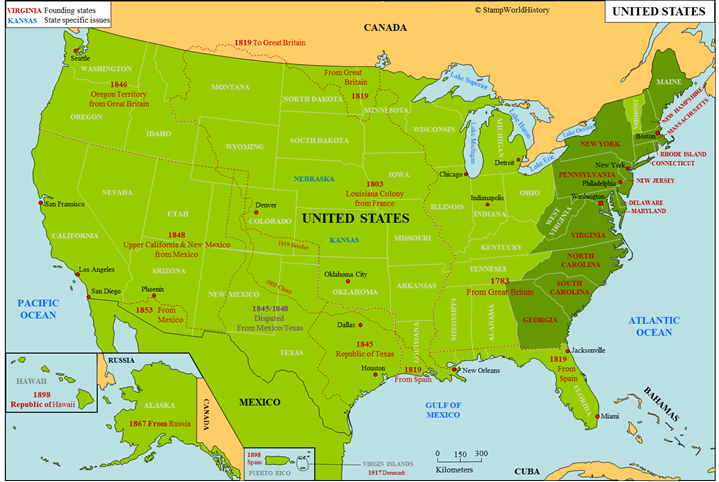
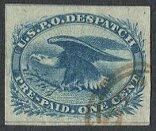
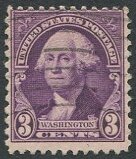
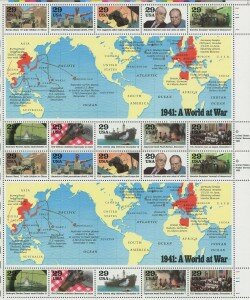
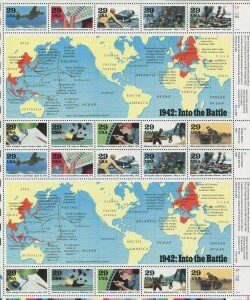
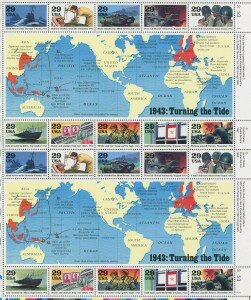
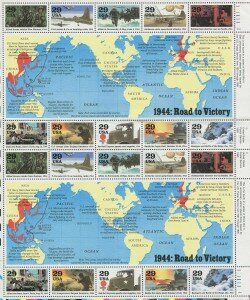
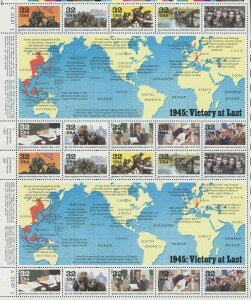
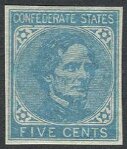
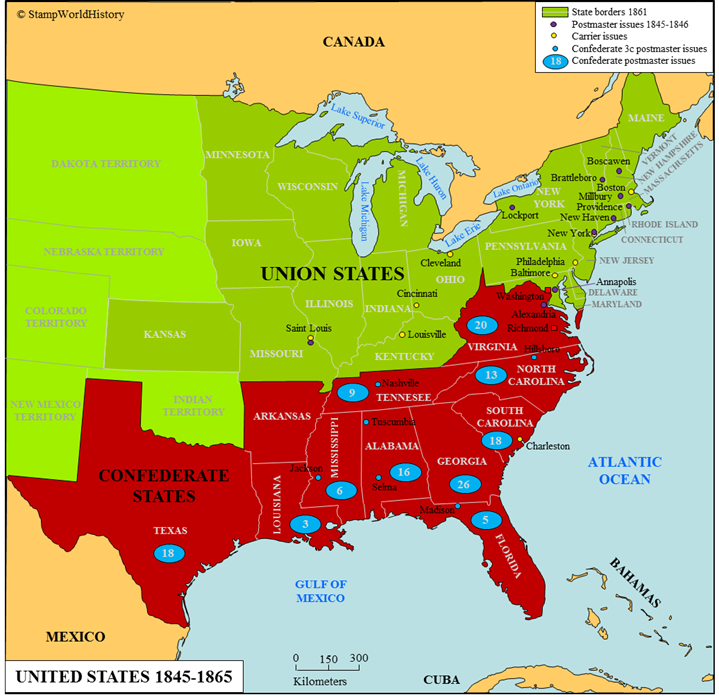
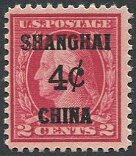


















Bravo Gerben! – You managed to summarize nicely. U.S. has a complicated history, or perhaps I just think so, as I live there.
I am not planning to do a review of U.S. stamps and issues on my blogsite. I am not a specialist in the U.S., and there are sites available that do a much better review then I could do.
Jim
The fact that over 25% of the visitors to SWH are from the US and that many are probably more knowledgeable on US political and postal history than I am, certainly put extra strain on writing this profile. But hey, there’s still the other 75% of the visitors from the rest of the world…. Thanks for the compliment, makes me rest more assured!